
After the success of their compact and affordable f/2.8 zooms Tamron has released a pair of f/2.8 primes: A 2.8/24 and 2.8/35. In this review I check, if the 2.8/24 is another big hit.
Tamron 24mm f/2.8 Di III OSD M1:2 Review
Most images in this review can be found in full resolution here.
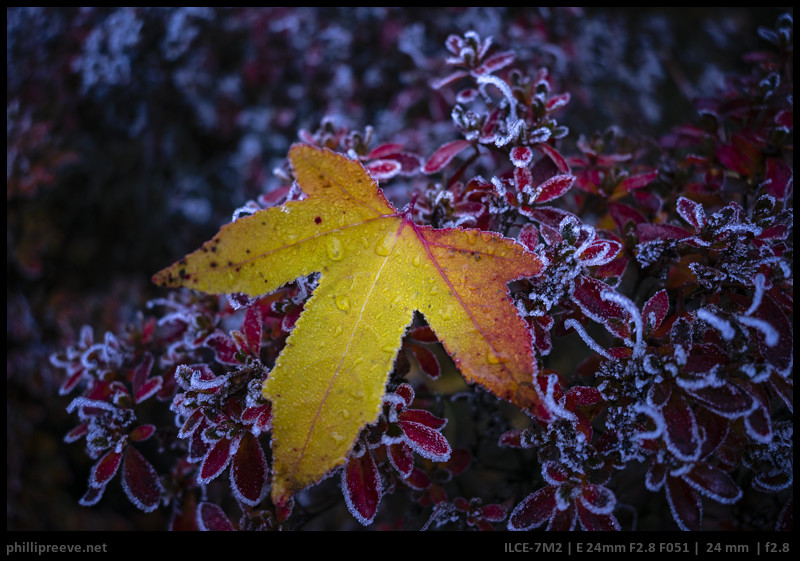
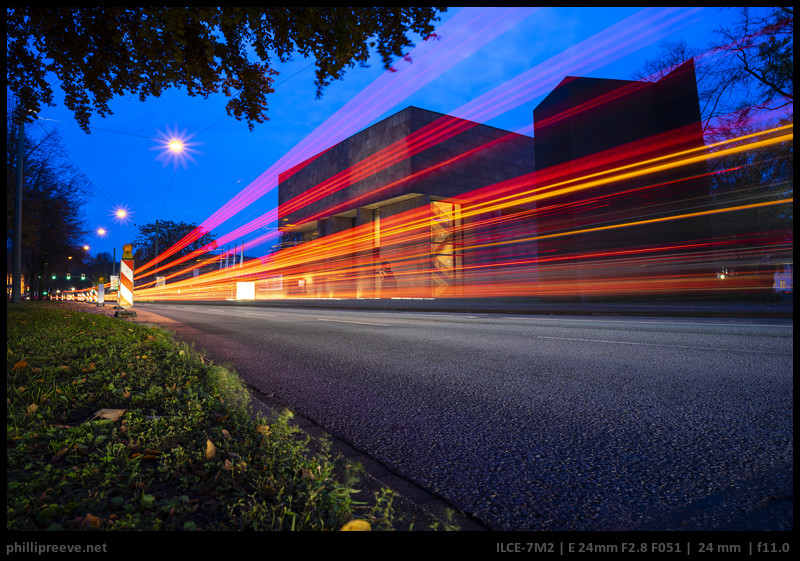
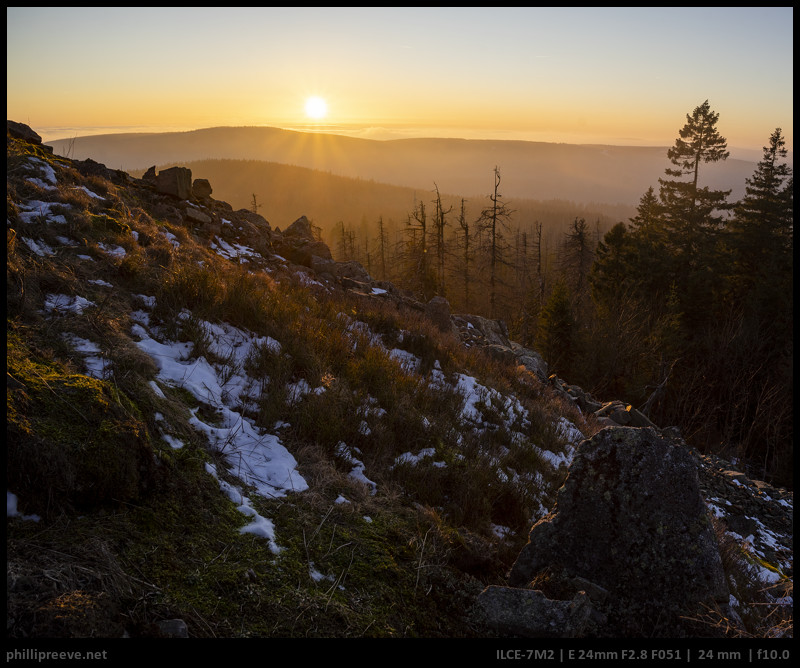

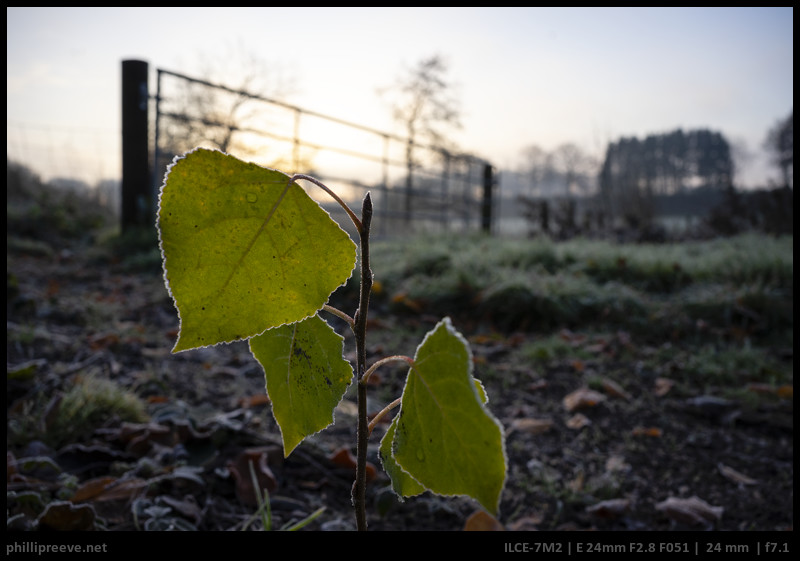
Specifications
| Diameter | 73 mm |
| Length | 64 mm |
| Filter Thread | 67 mm |
| Weight (no hood, no caps) | 215 g |
| Max. Magnification | 0.5 |
| Close Focusing Distance from the sensor | 12 cm |
| Number of aperture blades | 9 |
| Elements/ Groups | 10/9 |
| Mount | E-mount |
The Tamron 2.8/24 has a recommended price of $349. Check current prices at amazon.com, B&H or ebay.com. In Germany the recommended price is 429 €. Check at amazon.de.
If you purchase the lens through one of these affiliate-links I get a small compensation with no additional cost to you.
Disclosure
This copy was loaned to me free of charge from Tamron Germany for a few weeks.
Features
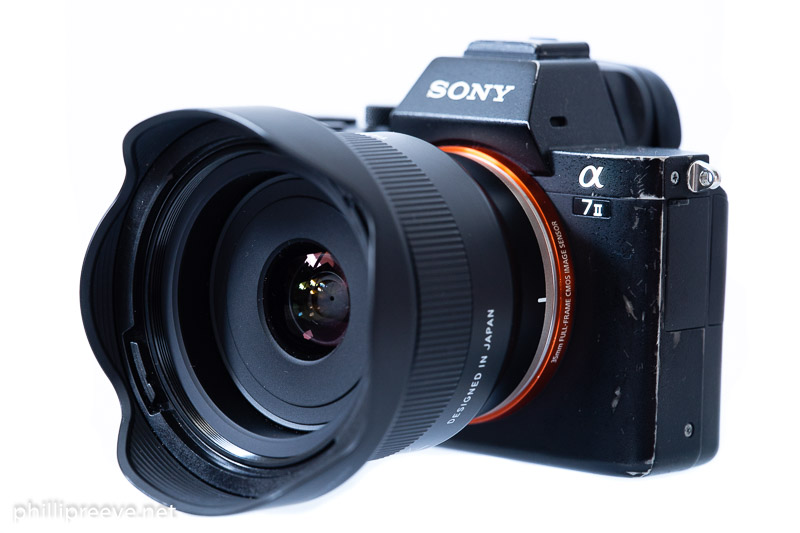
The Tamron’s biggest feature is its unusual close focusing ability. With a close focusing distance of 12 cm it reaches a magnification of 1:2 which is a unique feature for a 24mm lens.
Beyond that there are no features to mention. It has no buttons and switches.
Build quality
The Tamron 24mm f/2.8 feels solid enough. The outer hull is made from plastics with a metal mount. The rubberized focus ring is easy to grip and resistance is on the low side.
Tamron claims “moisture resistance” and the Tamron 24mm f/2.8 has a rubber gasket. As always I can’t tell how much these claims are worth.
I would say the Tamron feels a little nicer than Sony’s cheapest lenses like the 1.8/50 but not by much.
Handling
AF
I used the Tamron 24mm f/2.8 only on my a7II wich is a much slower focusing camera than the a7III and Sony’s other new models. AF was ok but a little on the slow side. One reason might be that focus isn’t internally but the front group moves about 6mm. AF isn’t noisy but can be heard in video.
Manual Focus
Manual focus is non linear, focus angle depends also on the speed with which you turn the focus ring. Like most I think that this behavior makes focusing manually harder. Another issue is that sometimes the focus change isn’t continuous but happens in jumps. Add the small lag experienced with all focus by wire lenses and overall I found the Tamron to be harder to focus manually than most other E-mount lenses.
Hood
The Tamron 2.8/24’s hood is made from plastics, locks safely into place and protects the front of the lens well but adds quite a bit to the already large diameter of the lens.
Size and Weight
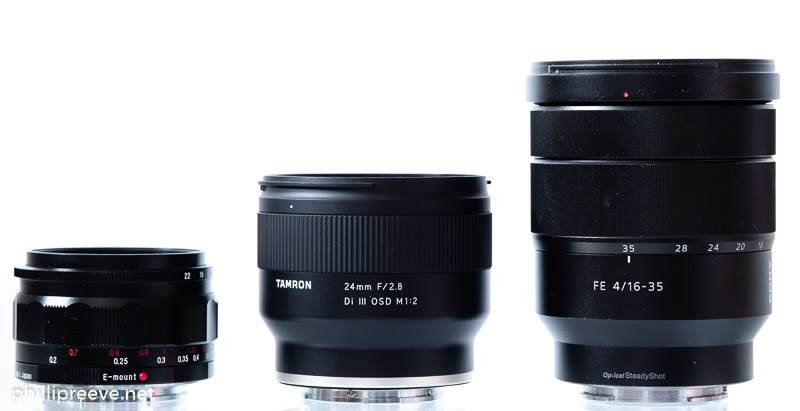
At just 215g the Tamron 24mm f/2.8 is one of the lightest E-mount lenses so one would expect it to be one of the smallest as well but it isn’t because Tamron decided to use a 67mm filter thread like their existing zoom lenses. Overall size is still quite moderate but the Tamron won’t make those happy who want to keep their kit as small as possible.
Optical performance
These results are based on the use with a Sony Alpha 7II.
Flare Resistance
As always evaluating flare is a complex matter since you can get any lens to look bad if you push it hard enough and a slight change of scenario will affect results a lot.
I would rate the Tamron 2.8/24’s flare resistance as good. There is a very small ghost and minor veiling flare but overall my impression was pretty positive.
Sunstars
7 rounded aperture blades result in ok sunstars at f/16 and fuzzy sunstars before.
Bokeh
Scene 1: close focus, demanding background
Scene 2: shorter distance, lower contrast background
Scene 3: shorter distance, high contrast background
- Out of-focus-highlights are rendered neutral with little outlining, even in more demanding scenarios at longer distance.
- Bokeh circles are mostly clean with no obvious onion rings.
- Aperture shape becomes rather obvious from f/5.6.
- Cat’s eyes are visible but they aren’t very pronounced.
- The transition zone is mostly smooth.
Not that Bokeh is a major aspect for a 24mm lens but especially because of the Tamron’s close focusing ability you can blur the background quite a bit and it will rendered mostly smooth. One issue when working close though is out of focus highlights become septagons from f/5.6 on.
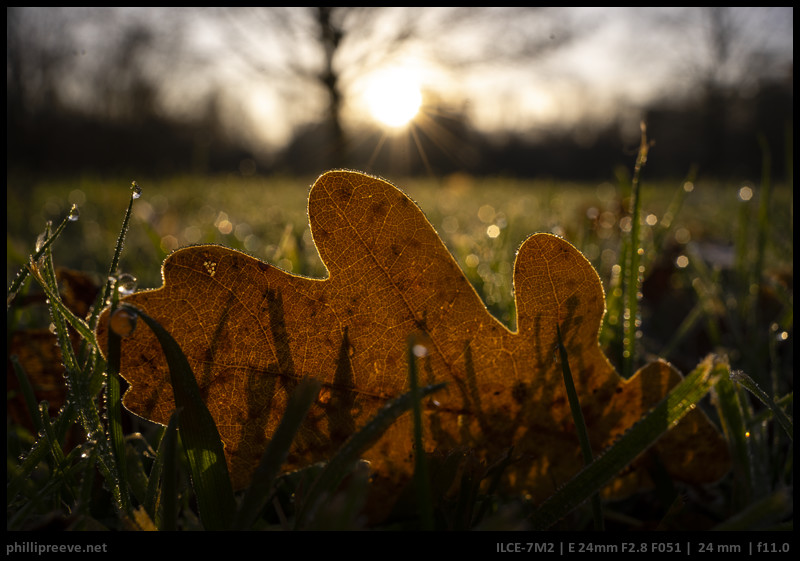
Chromatic Aberrations
LoCa are corrected very well.
Lateral CA correction is average and easily corrected electronically.
extreme corner with and without correction in LR. Lens disconnected from camera.
Vignetting
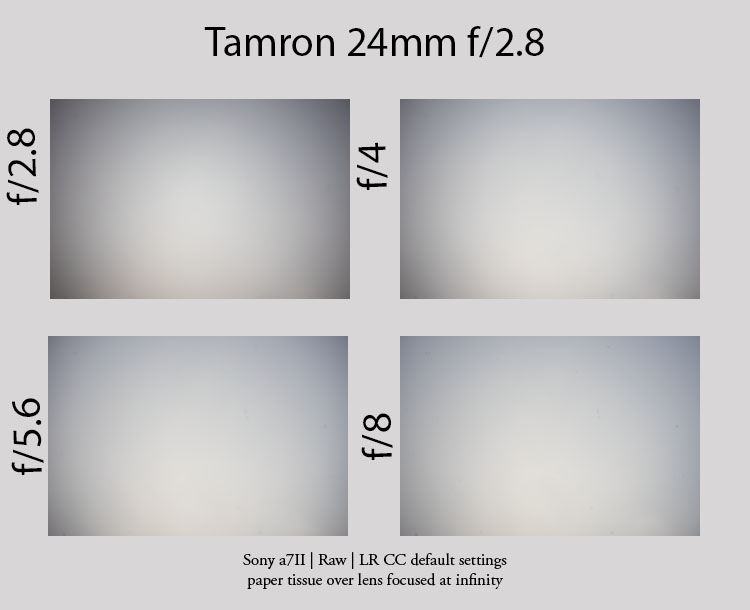
| Aperture | Vignetting |
| f/2.8 | 2.5 EV |
| f/4 | 2.2 EV |
| f/5.6 | 1.8 EV |
| f/8 | 1.7 EV |
Vignetting is pretty strong wide open and still noticeable stopped down. This characteristic is shared with most other compact wideangles like the Loxia 2.8/21.
Distortion
Distortion is beyond very high and will have to be corrected in many images. A value of +28 in LR corrects it well enough but not perfectly because distortion isn’t simple barrel but complex. Probably we will se a profile which corrects it better in the future.
After correction and cropping the 24 MP image of my a7II has only 20.5 MP, which is a loss of about 15% in resolution.
Astro-Performance
will maybe be added later
Sharpness
close focusing distance
I just tested central sharpness at 1:2 magnification but it is very high from wide open with some improvement as you stop down to f/4.
infinity
f/2.8: Very good sharpness across the frame. With distortion correction corners suffer quite a bit.
f/4: Excellent to the midframe, corners also improve a bit.
f/5.6: A slight improvement in the corners.
f/8: A tad softer in the center.
f/11: Some what softer due to diffraction.
All in all an excellent performance performance for a 24mm lens. You can use f/2.8 without hesitation. f/5.6 yields across the frame sharpness competitive with the very best 21/24mm lenses which are significantly more expensive. If you take the distortion correction into account though results are less impressive. You lose 15% of the pixels and the remaining ones are noticeably softer in the corners
Alternatives

Samyang 2.8/24: A much smaller lens and at the time of this review also a more affordable one. It is significantly less sharp, comes with stronger vignetting and has worse flare resistance but distortion is well under control.
Zeiss Batis 2/25: A stop faster and optically superior because it corrects distortion well, only CA is stronger. It is 100g heavier and it is also fatter. Used prices have come down a lot but still it is nearly twice as expensive as the Tamron.
Zeiss Loxia 2.4/25: Optically superior and a lot more pleasant to handle so it is the logical choice if you want a prime lens around 24mm for landscape photography.
Voigtlander 3.5/21: Significantly wider and smaller the more expensive manual focus lens is a lot more pleasant to handle. The midframe area is less sharp than that of the Tamron but you don’t need to correct distortion and can therefore expect better corners.
Sony FE 2/28: The similarly priced Sony is of course a 28mm lens and a god alternative if you are looking for a versatile wideangle prime. It isn’t quite as well corrected and shares the Tamron’s very high distortion. Since it is a stop faster and has no AF-Issues I find it to be significantly more versatile for reportage style photography.
Tamron 2.8/17-28: Tamron’s own zoom lens is an attractive alternative to this prime since it does neither have the focus issues nor the very strong distortion and shares the otherwise good optical characteristics of the 24mm. Sure it is bigger and more expensive but also a lot more versatile so it is a much better deal.
Conclusion
pros
|
average
|
cons
|
The Tamron 24mm f/2.8 is a very sharp lens with good flare resistance and the unique feature of 1:2 magnification. While it isn’t as compact as some competing primes it is still a lot smaller than any zoom covering 24mm and build quality leaves little to complain about. There are two weaknesses which weigh rather heavily in my eyes though. First is the very strong distortion which needs to be corrected for many images. Once distortion correction is applied the sharpness no longer looks that impressive but rather average. The second issue is the AF drive. The Tamron 2.8/24 is pretty slow to focus and also one of the hardest AF lenses to focus manually. In light of these compromises the price seems to be not as competitive as it might look at first.
Tamron tried to apply their usual formula to the 24mm f/2.8: Make it affordable, compact and high performance at the same time with a few trade-offs. Unlike with their f/2.8 zooms the trade-offs in this case are harder to swallow since they affect both image quality (distortion) and handling (AF/MF) so the 1:2 macro feature remains the only big plus for the Tamron.
Recommendation
I wouldn’t recommend the Tamron to many photographers. It is an easy recommendation if you want a wide angle macro. No other 24mm lens reaches such a 1:2 magnification though several zooms reach 1:4 magnification. The 7 aperture blades should be kept in mind though.
Beyond that application price is the only argument of weight I see for the Tamron. Especially if you shoot mostly nature where the distortion isn’t often an issue you get a very high performance lens for your money but you will have to live with the focus issues.
I would probably prefer a smaller and more affordable Samyang 2.8/24, an all round better Batis 2/25 or Loxia 2.4/25 or a more flexible zoom like Tamron’s own 2.8/17-28.
The Tamron 2.8/24 has a recommended price of $349. Check current prices at amazon.com, B&H or ebay.com. In Germany the recommended price is 429 €. Check at amazon.de. If you purchase the lens through one of these affiliate-links I get a small compensation with no additional cost to you.
More Image Samples
Most images in this review can be found in full resolution here.
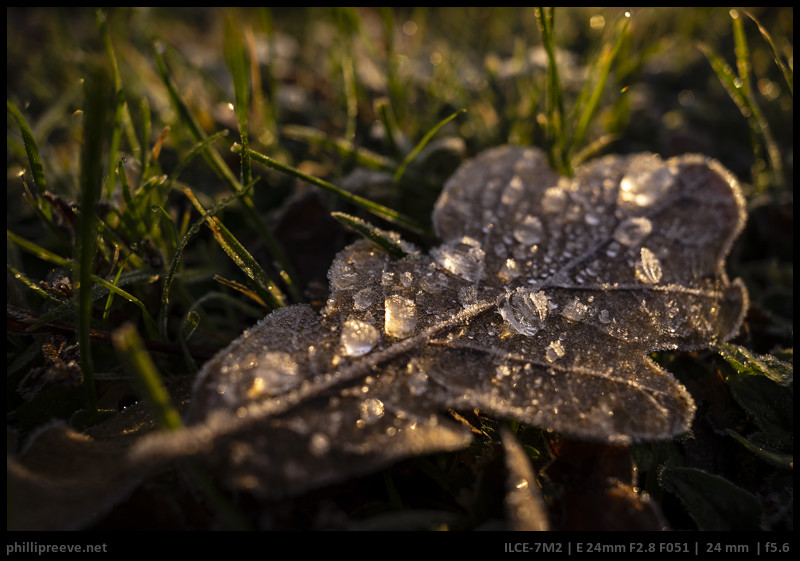
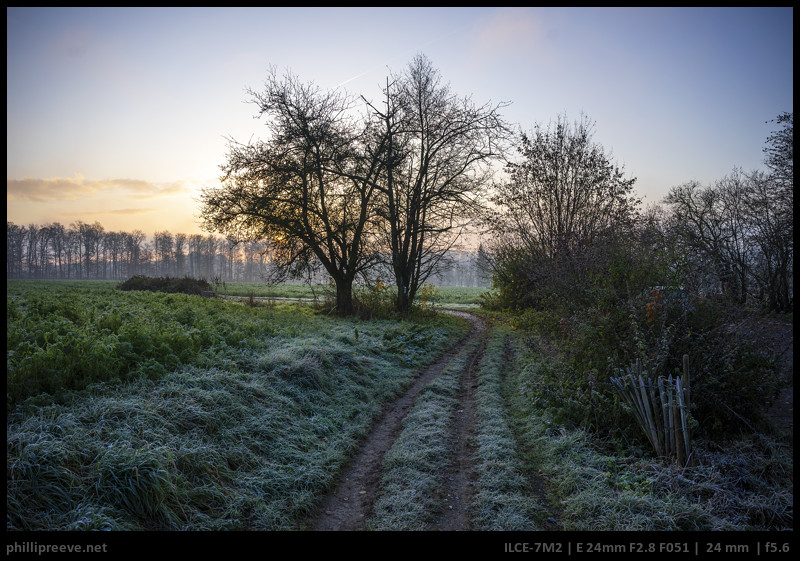
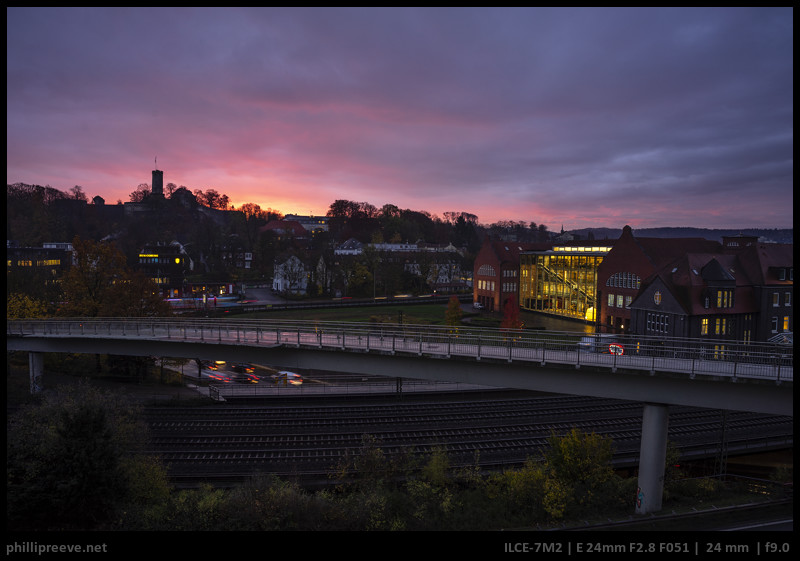

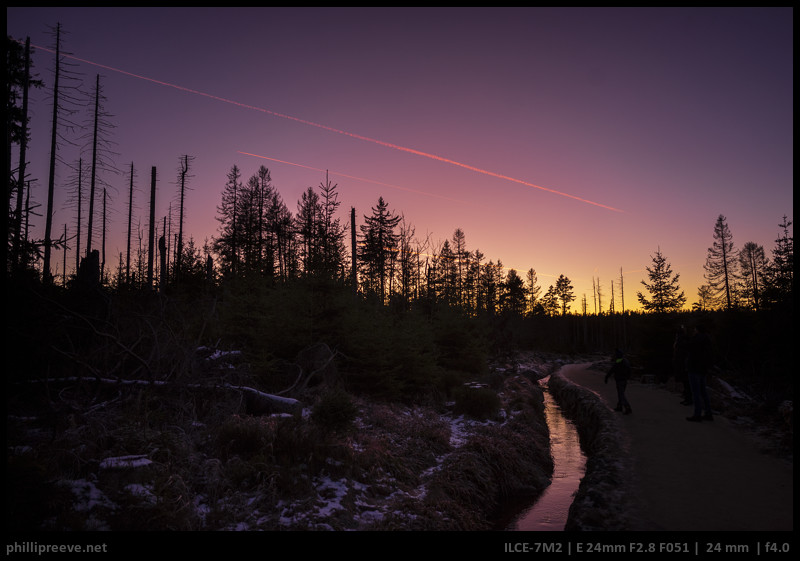
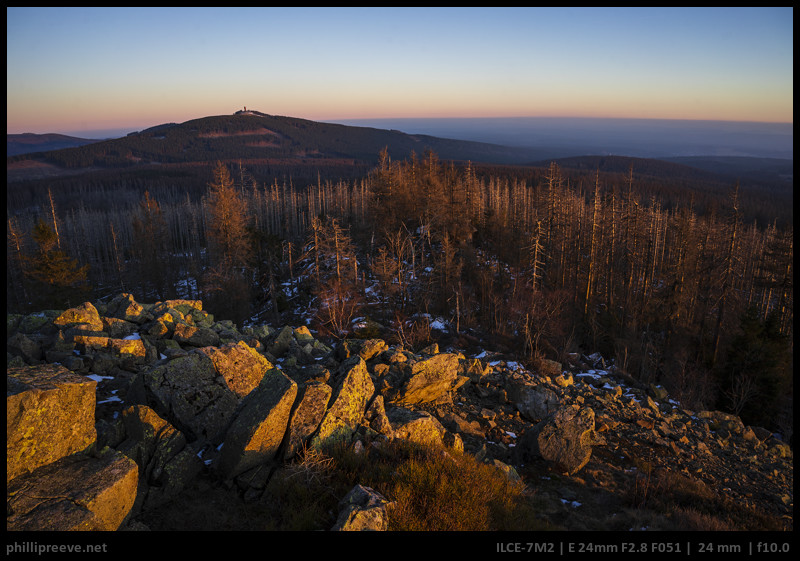
Other articles
- Beginner’s Guide to Manual Lenses on the Sony a7 series
- The best lenses below $499 for the Sony a7 series
- Sony FE List
- Guide to Wideangle lenses for the Sony a7 series
- Sony FE lenses: A comprehensive and independent guide
This site contains affiliate links. If you make a purchase using any of the links marked as affiliate links, I may receive a small commission at no additional cost to you. This helps support the creation of future content.
Latest posts by Phillip Reeve (see all)
- Review: Samyang AF 75/1.8 FE - April 12, 2021
- The FE-List now has 113 lenses on it - March 25, 2021
- 2020 – Year’s end review - December 28, 2020
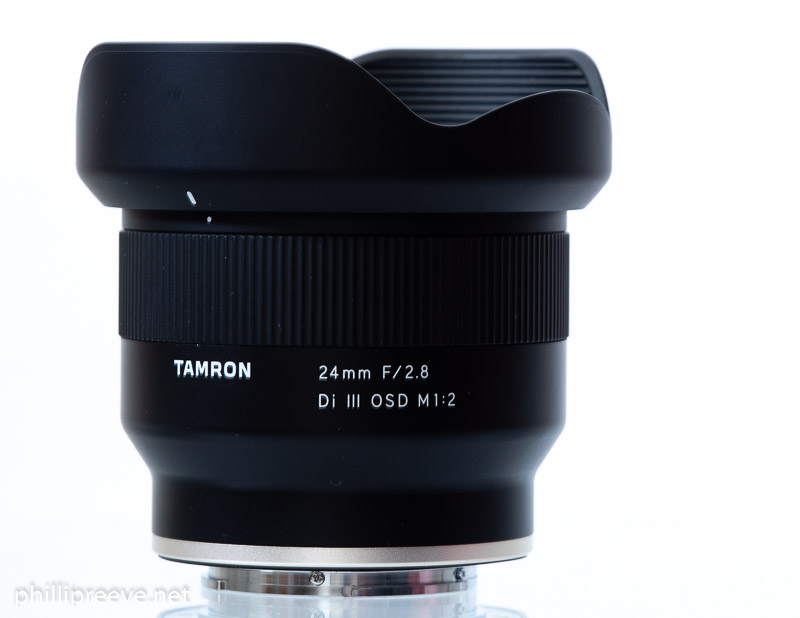
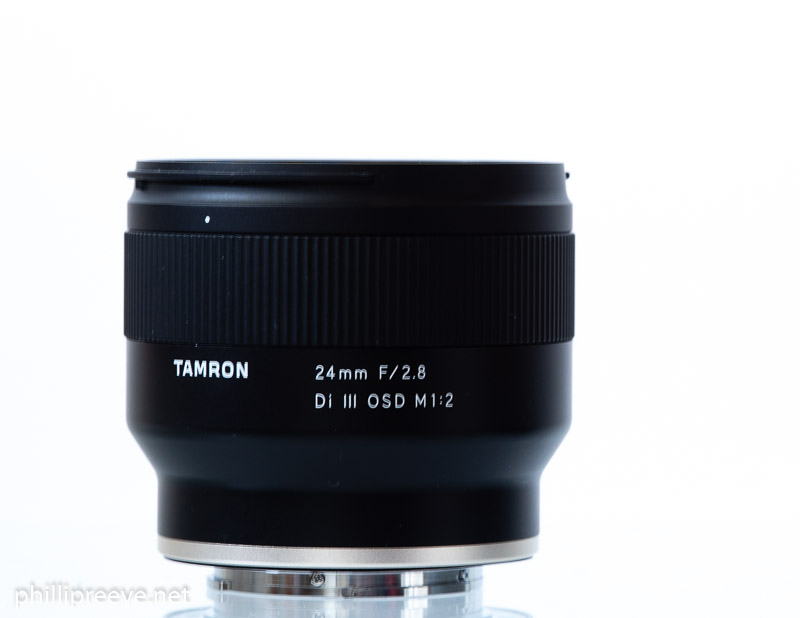
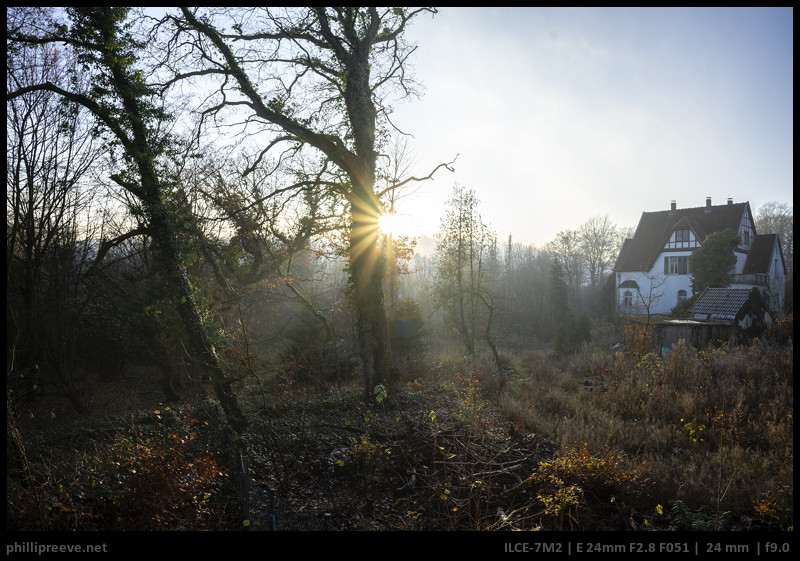
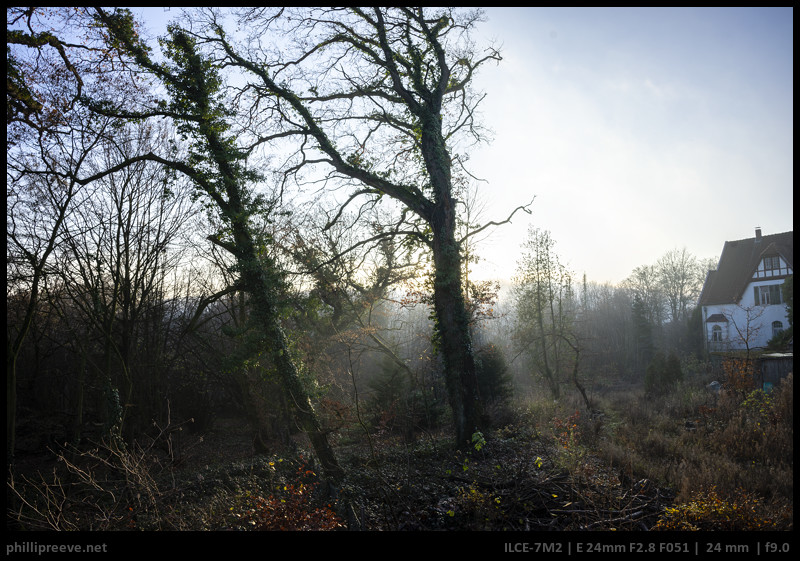
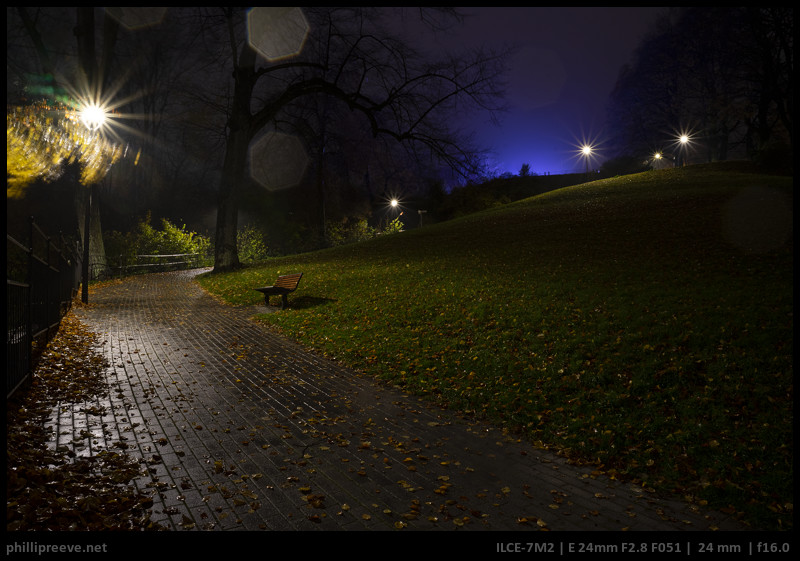
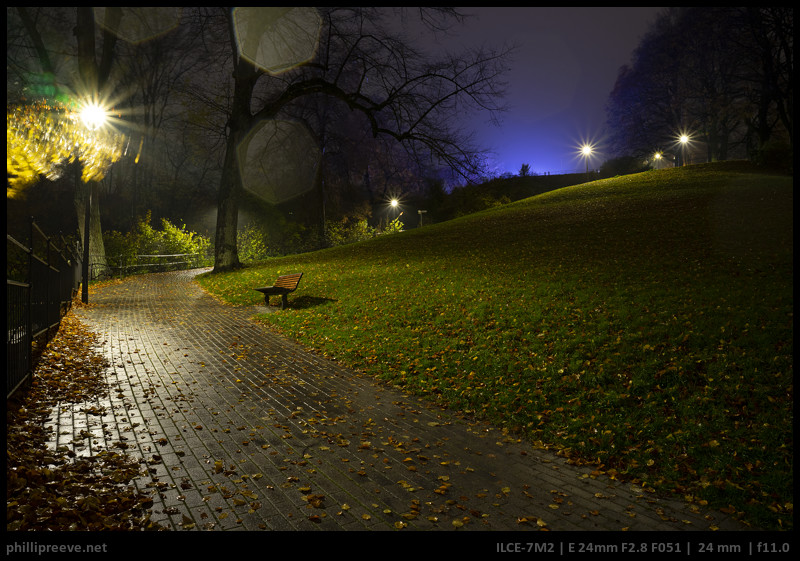


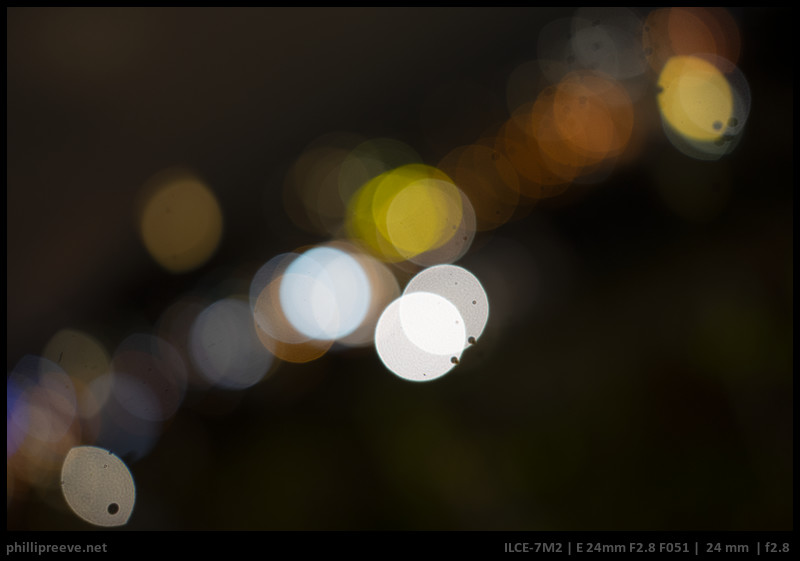
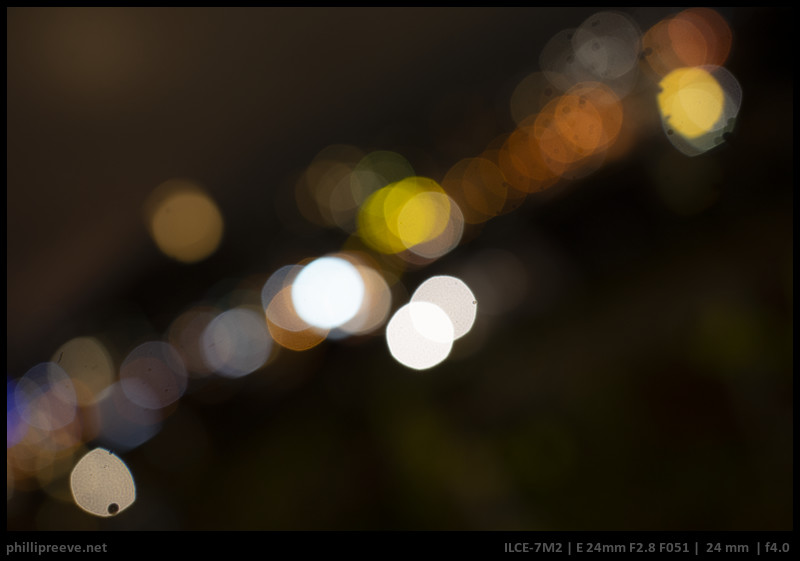
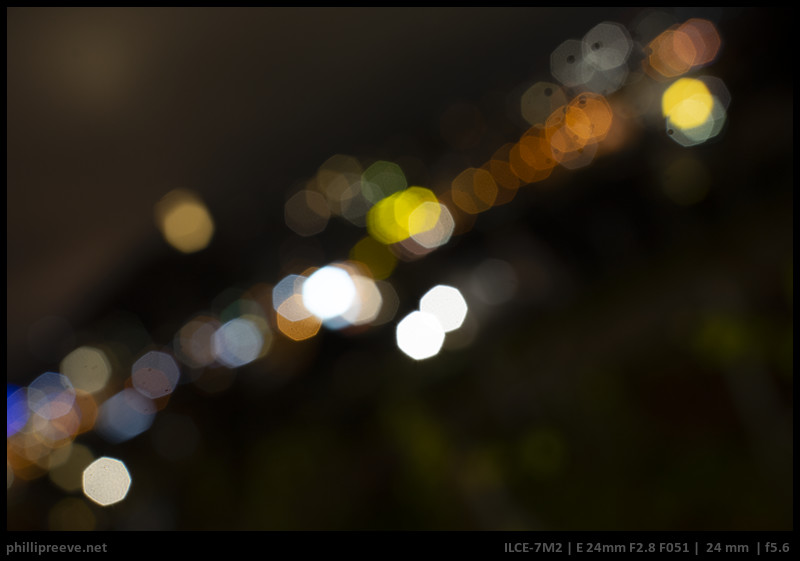
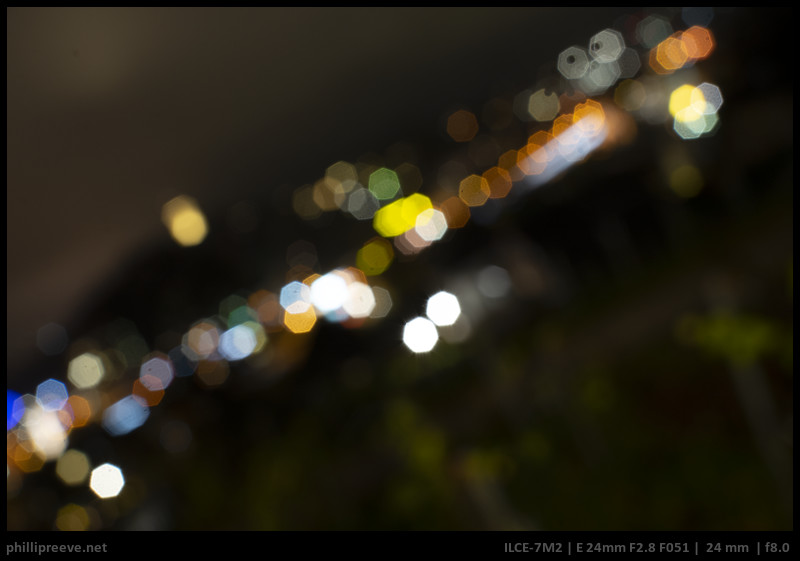





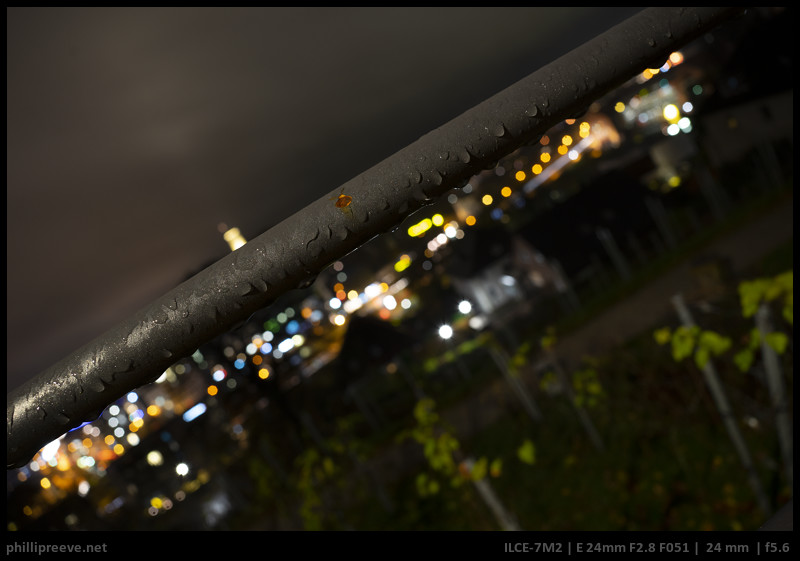


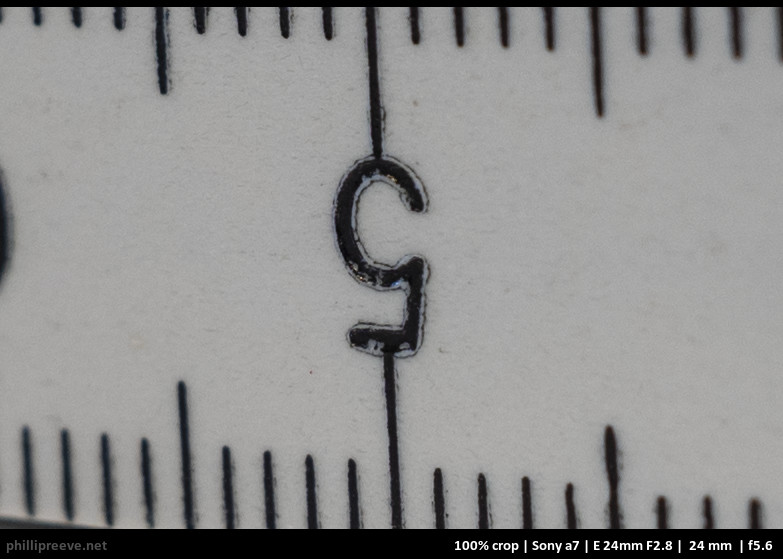
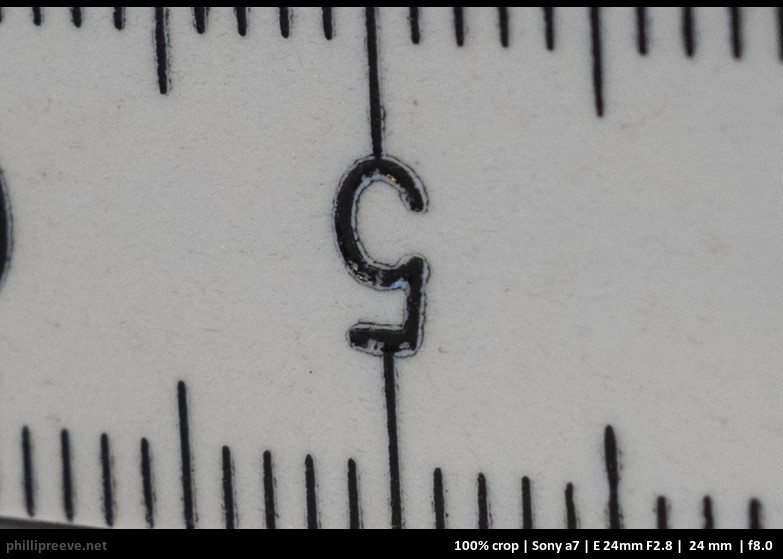
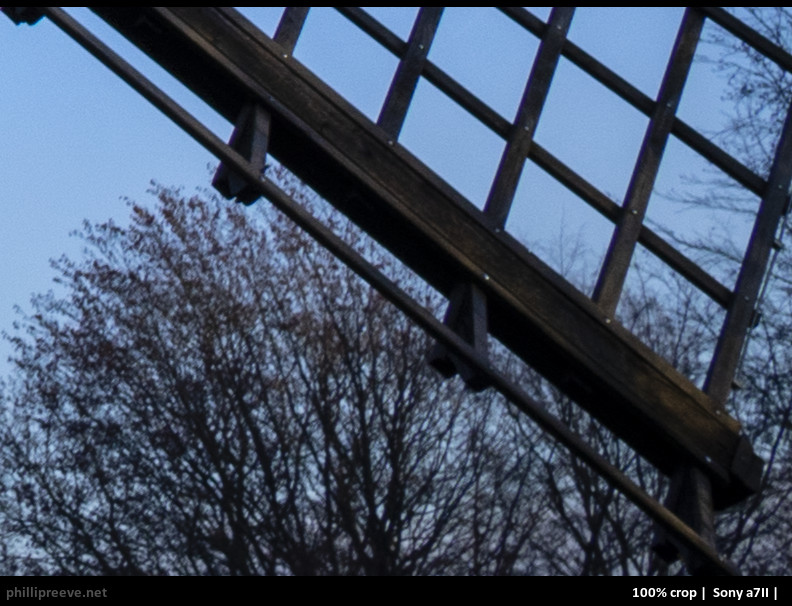
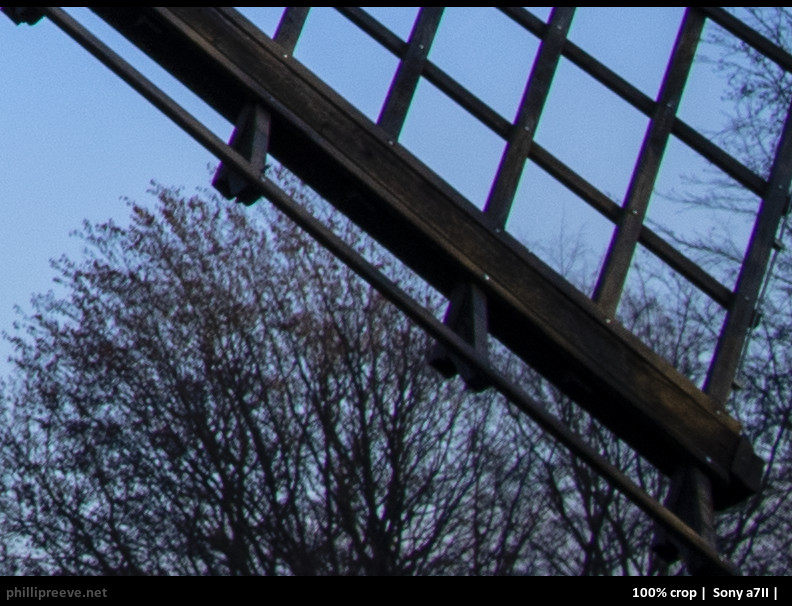
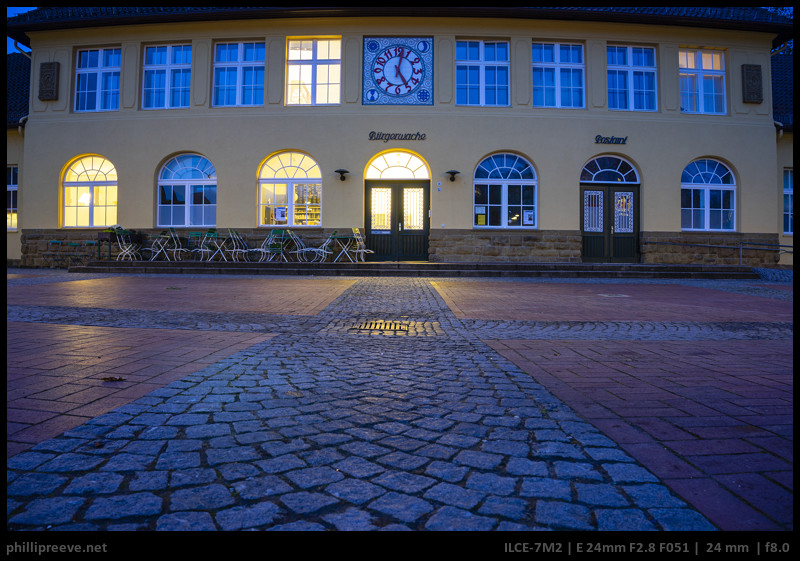

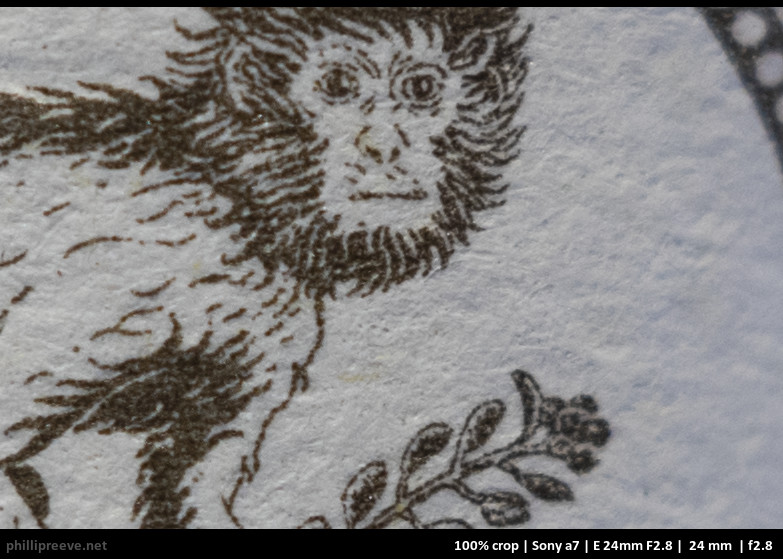

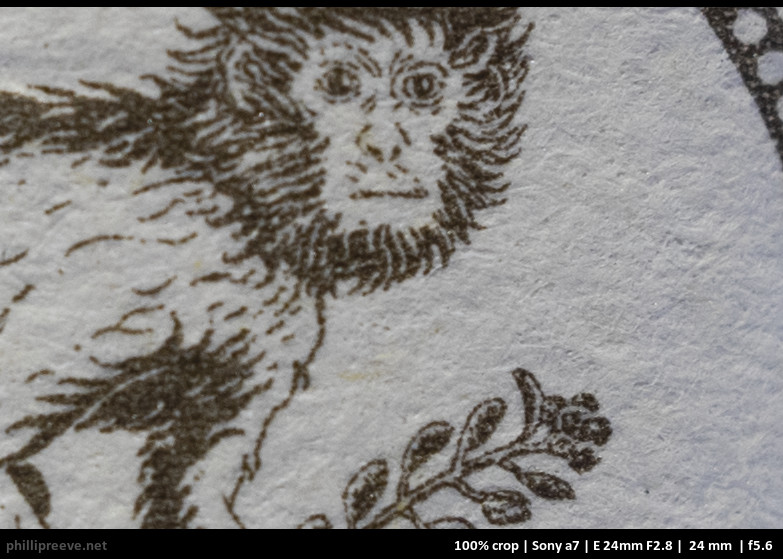
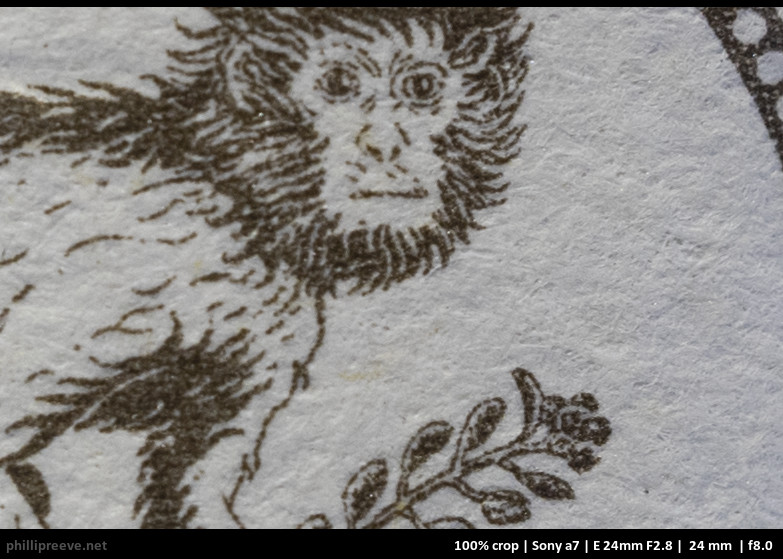

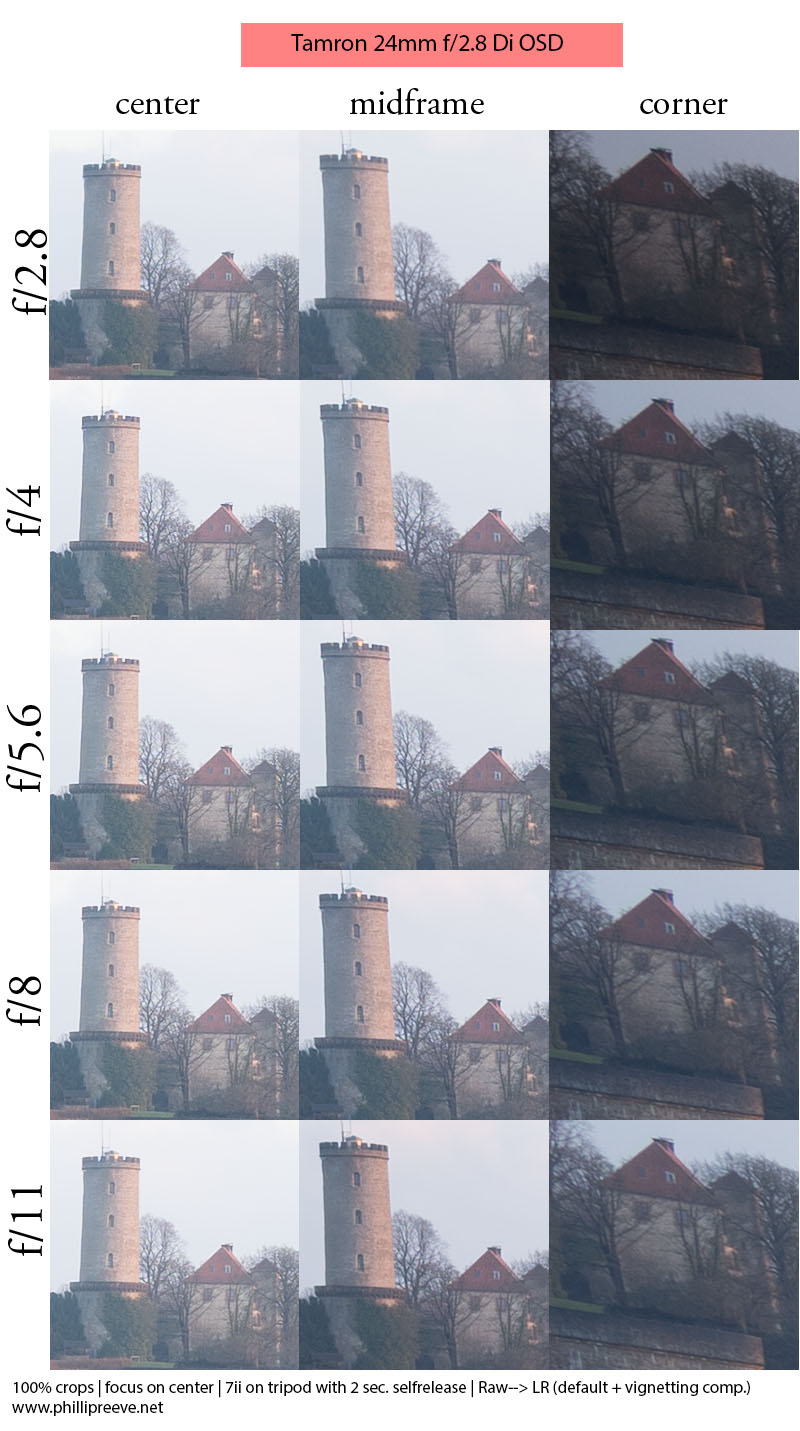



i’m not a big fan of Sigmas choice to keep the 67mm Filtertread because i think that makes the new primes unnecessarily big. Does the 17-28 even feel that much bigger? Its 420g an 99mm long… so twice approx. twice the weight and +30mm in length.
The pricing of the 24mm has to drop significantly, which it most probably will, i guess it will get cheaper than the sony 2/28.
For now i think the 17-28 is a much more attractive option…
I also read there are focus issues even on fast A7iii/A6400 cameras, so unless they fix that, not an interesting lens at alll.
> Tamron claims no weather resistance.
There _is_ moisture resistance: https://www.tamron.jp/en/product/lenses/f051.html
thanks, fixed it in the review!
I was interested in getting this, exclusively for the closeup ability, but I only use MF and your thoughts on the latter have given me doubts whether it’s worth getting. Would you say that its MF is as bad as a Zony 55/1.8? The latter has the most intolerable MF I’ve ever seen, and couldn’t get rid of it quickly enough. Thanks.
Maybe even worse I fear.
I am also looking for a wide angle macro, but the manual focus of this one and the edgy aperture are making sure I am not interested.
Hi Bastian,
yes, I think many of us are looking for better options in this field … in the meantime: could you share with us, what your preliminary wide angle close focus solution looks like?
Thank you for your great effort on this blog!
Oh well.
Currently Sigma 35mm 1.2 + extension tube if necessary.
There are 2 such examples here: https://www.flickr.com/photos/bastian_k/albums/72157711177039037
Other options I would consider being useful but offer other disadvantages:
Sony RX1(x)
Pentax 35mm 2.8 HD DA Ltd Macro
If 35 is not wide enough I keep using Loxia 21mm 2.8:
https://www.flickr.com/photos/bastian_k/30947241582/in/album-72157669364520916/
Thanks a lot for sharing your experience!
OK, thanks – sorry to hear that – I guess they’ve just lost a sale.
I believe Tamron claims weather sealing.
Is the field of view 24mm before or after correcting distortion?
Would like to know that too.
would be another bummer if its ~25mm after correction.
The Sony 2/28 is actually quite a bit wider (~26mm), before you correct it.
Phillip, can you please comment on this?
Damn good picture the last one!
– It is not always about technical stuff…
hey, guys!
what’s the black spots on the bokeh? it’s bigger than usual
dust I think
IQ looks good other than the distortion.
I’d buy it just for the extreme close up capability.
Thanks for the review phillip! As usual, would you mind sharing some full-res shots on your flickr?
had some issues with flickr which are now fixed and samples are linked 🙂
I Phillip , I tested the Tamron 24 and 35 on A7RIV (61Mpix) and sharpness is excellent to outstanding on it, much better than the Zoom 17-28mm / 28-75mm
it competes very well in term of sharpness with the 24 GM
see my review here with full size samples
https://sonyalpha.blog/2019/12/04/tamron-24mm-f2-8-di-iii-osd-m-12-f051/
cheers
Marc
Don‘t really see how we disagree: Before distortion correction sharpness is excellent. As far as I see you did not test after distortion correction and you also test at rather short distances which often yields different results than testing at infinity.
I guess though when using the lens on 61MP distortion correction is a bit less of an issue than with 24Mp because losing 15% of the pixels and some sharpness is easier to stomach because you have a much bigger reserve.
Marc, I’d be interested in knowing whether you experienced the same MF issues as Phillip. I’m wondering whether they are a defect of the product or a defect of the specific copy he tested.
While I’m waiting for the 20mm, the reason I’m interested in these 1:2 lenses are AF and the capability of doing macro without additional gear. At the moment I’m doing macro stuff with old lenses (50mm and 100mm) and focusing helicoid; plus the SEL70200G and additional lens (AF doesn’t work in this configuration). I’m pretty pleased with the results, but I’d like to 1) add a wider lens and 2) have both AF and MF. A slow AF doesn’t bother me, if it’s accurate. But a quirky MF would bother me.
Well there we have a real problem…, how does one test, and how does a lens perform on a camera…
The FE 50mm F1.8 was qualified as a slow AF lens…, but suddenly on the A9 it became the fastes AF performer.
Marc Alhadeff’s does not mention the MF performance of the lens, and that seems te be the weakest point of it…
While the close focus distance and the price have got my attention I am probably going to wait for the 20 mm version of the lens that’s being released in Feb…I don’t see myself as needing two wide angle primes with 1:2 magnification and the 20 mm would provide a more interesting perspective I think.
fingers crossed for the 20mm, I’ve seen that it relies heavily on software correction for distortion too, but I hope it performs OK, or else I would have to risk the Samyang lottery
FYI in the Bokeh section you’re oddly referring to the Sony FE 1.8/35 (copy-pasted review blueprint? 🙂 )
Thanks a lot for the review, as usually!
fixed, thanks!
I normally travel with my 55/1.8, so this would tick the wider angle and close focus boxes for me. I’ve tried the Samyang and the sharpness, af performance and shocking flare control were all deal breakers for me. I’ve owned the 28/2 so can definitely live with the distortion – hopefully DXO will release a decent profile for it (the 28/2 profile does funny things with colour).
Obviously I’ve not got my hands on it yet, but this seems like the best option if you want a prime and don’t want to spend £1000 on the batis.
I have the 35 mm f/2.8 Tamron and my evaluation of it’s optical properties is pretty similar to what you’re seeing in the 24 mm, except that the distortion is not nearly as bad. Not too surprising as a 35 mm focal length should have less distortion than 24 mm.
I’m pretty happy with the 35, which is actually much better optically than I expected. But Tamron obviously had a niche they were aiming at with this series and the strategy may work better for some focal lengths than others.
I don’t have the 24mm, but I did pick up the 35. I can’t believe how sharp it is, right from wide open. Beats the Sony FE 35/2.8 ZA, adapted Canon 40mm f/2.8 STM, and I think it beats my Zeiss Batis 40mm f/2 CF. Granted the Zeiss gives you an extra stop, and the Tarmon is noticeably wider, but I think the Tamron bests it sharpness wise.
What happened to your camera?
I’ve recently had a rub mark from a PeakDesign strap adjustment anchor on mine 🙁
Didn’t get all the way through the paint though.
I’ve hoped 50mm F2-F2.8-ish lens with 1:2 or better macro capability, but Tamron disappointed me.
I’m into Macro videography nowadays, but using AF other than Sony 90 F2.8 G macro has disadvantages on their own: Sigma 70 f2.8 hunts a lot and Sony 50 F2.8 is noisy and slow. Tamron proved 3rd party lens makers can make decent AF lens on E mounts, so I hope they make some useful macro lens after their 70-180.
It´s always a pleasure read your reviews and watch the photos you take with each lens… You make shine the worst glass!!
Kommt noch ein Test des 35ers?
Dann wäre es interessant, ein gutes Altglas daneben zu sehen, zB das Minolta (5-Linser).
Oder gleich alle gängigen 35er, f1.8 oder lahmer
Thank you kindly for the review and thoughts compared to the Tamron 17-28mm F2.8. I had the Sony Zeiss 16-35mm F4 and I am really happy that I sold it and bought the Tamron 17-28 after reading this and your other review of the Tamron 17-28 itself. Your site is awesome and I truly appreciate you sharing all the knowledge/ opinions! Keep up the good work, and as I have mentioned before, hit me up if you want to come shoot in Lofoten so we can go on some nice lightweight Sony gear hikes to nice spots 🙂 (After the Covid outbreak of-course!)
thanks Bjornar 🙂
It should be mentioned that it is wider, even after correction of distortion than the other 24mm that I had (nfd,ef) the difference in focal lengths with the scopar 21/3.5 is very small.
Thank you for this well written review. In the end I decided to just stick with my Sigma 16mm f/1.4 DC DN on my a6000. It amounts to the same equivalent focal length (24mm), it does some very nice close focus, and I already own it.
Have just picked up the Tamron 35 2.8 for 179 euro brand new. I don’t use 35mm all that much normally, as prefer 28mm (gr3, sony f2 and sigma 28 1
4) .. However, it’s a bargain and gives me wide macro option that I didn’t have and is plenty sharp on apsc too for a cheap 59mm option, when I cant be bothered to manual focus the Milvus 1.4!
Now tempted to get the 24mm for the same price. Effectively similar output to 35mm 1:1 macro in apsc mode
Now to find some macro inspiration and tutorials
It’s not a fun lens to use, but it takes good pictures if I spend the time.
Hi Phil. I bought the Tamron 24mm F2.8 fairly recently based on Marc’s review. Was told what a huge mistake I made by several people pointing to your review. I must say, with my latest copy of Adobe and my A7RV, AF is no issue at all, even tracks CAF with Eye A/F of moving targets. As long as I pay attention to level indicators in my EVF, processing is simple, and I still get excellent corner to corner sharpness after correction by the profile up close and at landscape distances as well. I wonder if circumstances have changed much since your initial review or your loaner was a lemon, because I find the lens to be gem and crazy good value for the money.
When the review was written Tamron tried to sell this lens for $349. That price dropped to $149 in the meantime, which of course makes it better value and a more interesting option.